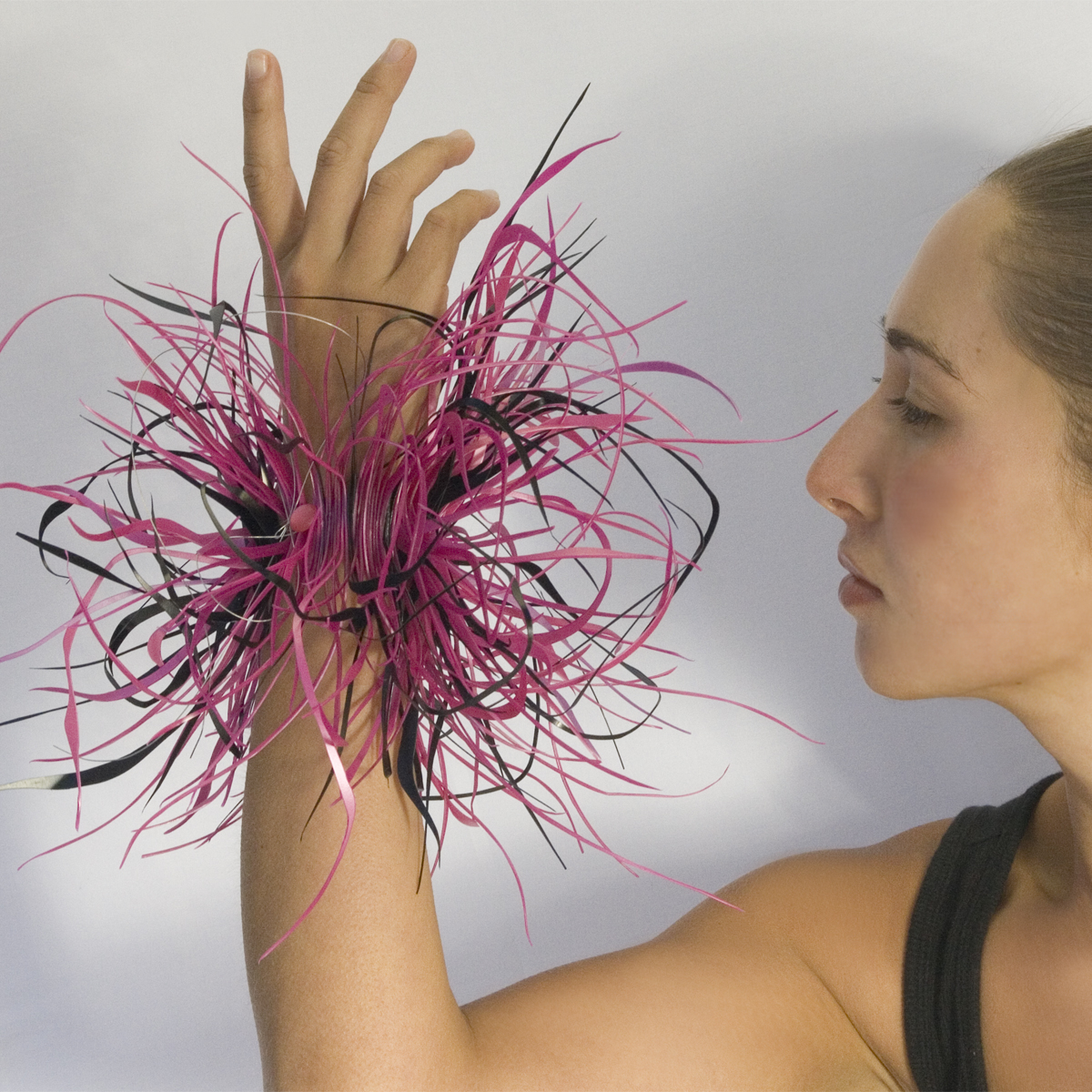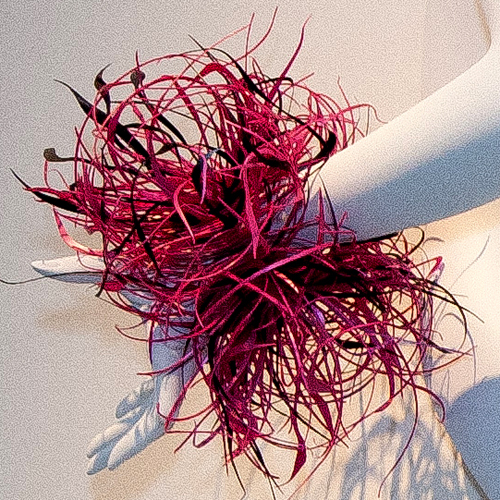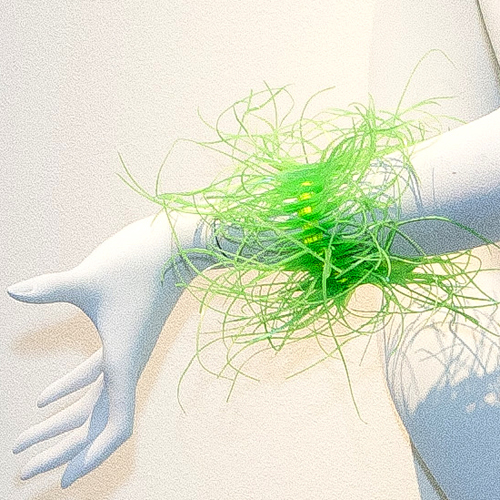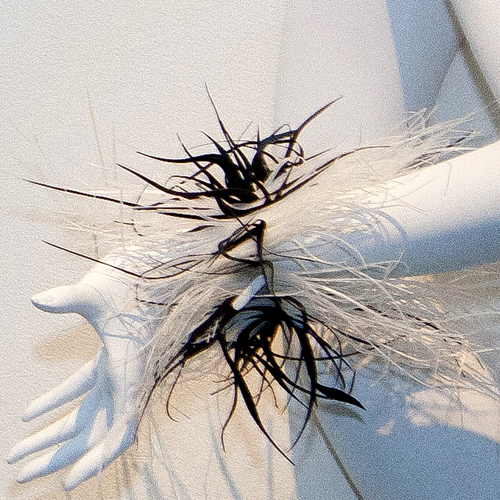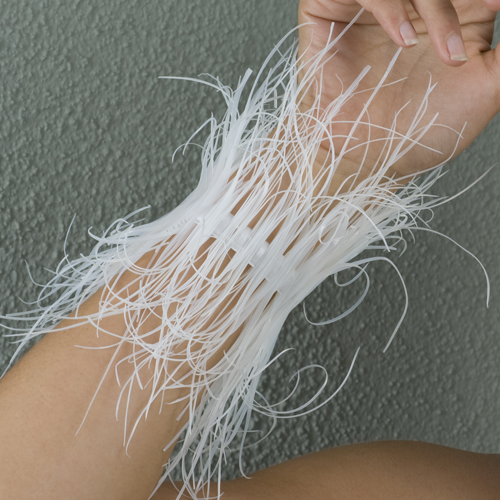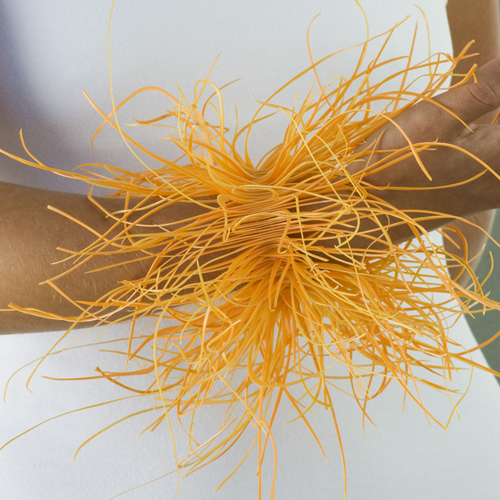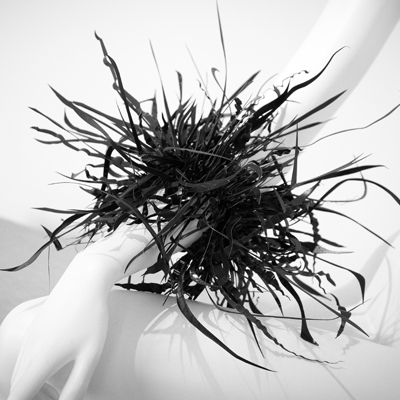Click on any image for more details and price.
One issue acknowledges that thousands, if not millions, of dollars are invested in packaging technology and seductive design with jewel like colors and interesting forms with no accountability for the overabundance of consumer waste. Sometimes the container’s character reflects the contents, such as the “orange” of orange juice plastic or the “milky white” container for milk. Other times, the container seems more like an exotic Aladdin’s lamp attributing magical properties to an elixir that we never see, but consume.
Plastic is seductive material with serious environmental impact. Consider the volume of single use containers that are irresponsibly thrown away, the quantity of plastic waste in our oceans and inner waterways, and the exposure issues to plastic in our food. The list just keeps growing.
Steven Michaels Photography Photo taken at the exhibition "Head to Toe" 108 Contemporary, Tulsa, OK
The second issue is that plastic, despite its amazing properties, has serious environmental impact because it is the most denigrated and most negatively valued of material. The public views plastic as socially inferior and environmentally irresponsible. People who are shallow or insincere are even described as “plastic.”
A man-made invention, plastic can be seen as a miracle of modern science yet somehow retains a negative public image. This material has no intrinsic value. It is not as precious as gold or silver, but in many ways it symbolizes the values created through mass-marketing and consumption.
It is estimated that less than 10% of plastic waste is recycled and it does not degrade. Instead it breaks down into micro particles eaten by fish and animals, contributing to an early death and food chain degradation. The volume of single use containers and plastic debris darkens our future, polluting our landfills, oceans, and waterways.
The Great Pacific Garbage Patch (in the Pacific Ocean) is estimated to be twice the size of Texas.
Additional issues include increasing human exposure to plastic in our food.
Can awareness of the long term environmental impact of plastic change behavior?
This video shows a shocking example of plastic debris in the oceans.
The Recycle Fuchsia Bracelet above is from a premium quality shampoo that came in a brilliant colored PE #5 plastic bottle. The black is take out trays.
#5 plastic, or polypropylene plastic, is the most common plastic used in the U.S., according to the EPA, and can be found in anything with a hard plastic package (toothbrushes, cottage cheese containers, medicine bottles, lip balm tubes, yogurt containers, and so on). Unlike its #1 and #2 counterparts, which are recycled at a reasonably high rate, over 99 percent of #5 plastic gets sent to the landfill.
This represents a loss of a vast source of raw material, as #5 is one of the most benign plastics and can be reused to create new products with relative ease. Learn more about the potential of plastic recycling and reuse in this TED talk by Mike Biddle.
The Recycle Aqua Bracelet (left) is made from an aqua plastic shampoo bottle, #5 PE plastic.
Sometimes the plastic container's character reflects the contents, such as the "orange" of orange juice plastic or the milky white container for milk. Other times, the container seems more like an exotic Aladdin's lamp attributing magical properties to an elixir that we never see, but consume.
The plastic problem is increasing, our efforts to control the problems are inadequate. "While more people tote reuasable cloth bags to the supermarket, plastic is piling up in other domains, from TechShop to Target."
Nearly invisible plastic micro beads from toothpaste enter the waste stream but skip capture in water treatment plants. Entering the waterways and oceans, the microbeads are eaten by fish, yet can not be digested.







